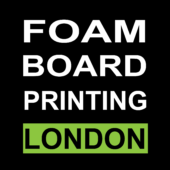Foamex: The Versatile Material Redefining Modern Industries
In the realm of modern materials, Foamex stands out as a versatile and invaluable substance that has revolutionized numerous industries. But what exactly is Foamex made of, and why has it become such a staple in manufacturing and construction? Let’s delve into the composition and applications of this remarkable material.
Composition:
Foamex, also known as expanded PVC (polyvinyl chloride), is crafted from a combination of PVC resin and various additives. These additives may include plasticizers, stabilizers, and foaming agents. The magic happens during the manufacturing process when the PVC resin undergoes expansion through the introduction of gas. This results in a lightweight yet durable foam material with a myriad of beneficial properties.
Properties:
The unique composition of Foamex imparts it with several advantageous properties:
- Lightweight: Foamex is exceptionally lightweight, making it easy to transport and handle. This property is particularly beneficial in industries where weight considerations are paramount, such as transportation and signage.
- Rigidity: Despite its lightweight nature, Foamex boasts impressive rigidity and structural integrity. This makes it suitable for a wide range of applications where strength is essential, including construction and furniture manufacturing.
- Weather Resistance: One of Foamex’s most notable attributes is its exceptional weather resistance. It can withstand exposure to harsh environmental conditions without deteriorating, making it ideal for outdoor signage, cladding, and architectural applications.
- Chemical Resistance: Foamex exhibits resistance to a variety of chemicals, including acids, alkalis, and solvents. This property enhances its durability and extends its lifespan in demanding environments.
- Versatility: Foamex is highly versatile and can be easily fabricated into different shapes, sizes, and thicknesses to suit specific requirements. It can be cut, routed, drilled, and heat-formed, allowing for intricate designs and customized solutions.
Applications:
The versatility and durability of Foamex have led to its widespread adoption across various industries:
- Signage: Foamex is a popular choice for signage due to its lightweight nature, weather resistance, and ease of customization. Whether used for outdoor advertising, retail displays, or directional signage, Foamex delivers exceptional visual impact and longevity.
- Construction: In the construction industry, Foamex finds applications in cladding, insulation, and structural elements. Its combination of rigidity, weather resistance, and ease of fabrication makes it an attractive alternative to traditional materials like wood, metal, and concrete.
- Printing and Display: Foamex serves as a preferred substrate for digital printing and display applications. Its smooth surface ensures vibrant and high-definition printing results, making it ideal for point-of-sale displays, exhibition graphics, and interior décor.
- Packaging: Foamex’s protective properties make it well-suited for packaging applications. Whether used as cushioning inserts, protective dividers, or lightweight containers, Foamex helps safeguard delicate items during transit and storage.
Conclusion:
In conclusion, Foamex stands as a testament to the ingenuity of modern materials engineering. Its unique composition, coupled with a diverse array of beneficial properties, has propelled it to the forefront of numerous industries. From signage and construction to printing and packaging, Foamex continues to redefine possibilities and inspire innovation. As technology advances and new applications emerge, Foamex is poised to remain an indispensable component in the fabric of modern manufacturing and design.
